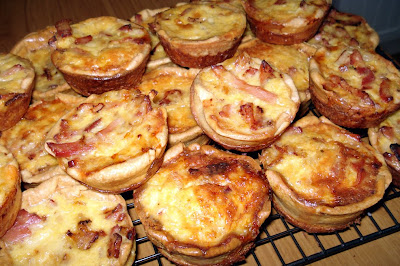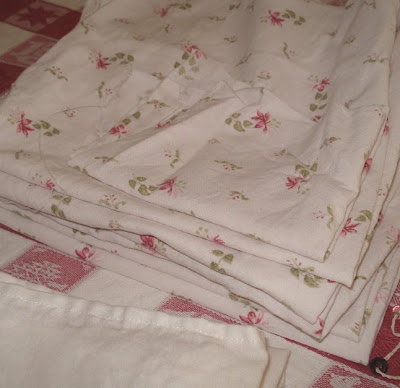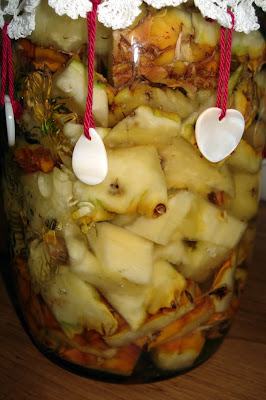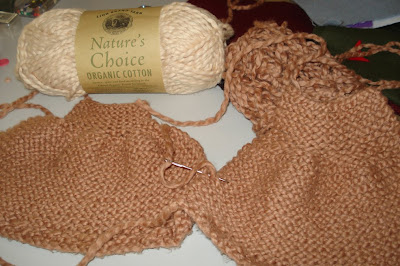We had a lovely weekend. I woke early on Saturday to bake pastry cases that I'd already prepared and had waiting in the fridge. It was our fundraising morning for the Centre and I was on a promise for more mini quiches. The ingredients cost $17 and we turned that into $72. Now that's value adding! So I crept around mixing eggs, cooking bacon, onion and garlic - there were two sleeping men in the house and I didn't want to wake them. Kerry came to visit on Friday and stayed the night and as he works so hard at his job I hate to ruin a sleep-in for him. So the cheese was grated and the minis baked while the house filled with the aroma of a French farmhouse. When Hanno woke, I had my shower, dressed then drove up the mountain with the still warm quiches.

The mini quiches. These are very popular on a fundraising stall because they seduce everyone who hasn't yet had their breakfast.
It does my heart good to see those volunteers at work. There were six of them there, organising, carrying, preening, helping and selling and all happy to do it. In the end, after four hours, they'd made just over $1000. All that money goes to the Centre to help with the work we do. We are an unfunded Centre so fundraising and donations make or break us.
Kerry left at lunchtime, I made a large jar of bread and butter cucumbers and some lemon cordial from the frozen lemon juice treasure I have hiding in the freezer, then went to my work room to sew. I few minor repairs were carried out, then I spent quite some time writing Christmas cards for the volunteers where I work. I've invited them all to afternoon tea next week where I will give each of them a small gift (I can't tell you what I bought because many of them read my blog), and my thanks for the important work they do.
The cards finished I started tidying up, putting away this and that, sorting through cottons and wool and while I worked, the rain started. We've had only one good shower of rain since the night before the wedding (in June) so I didn't get too excited. But soon the rain was horizontal, winds were roaring, leaves and small branches started falling and the front tank overflowed. Hanno and I stood on the veranda to watch the lightening fork downwards and a river of water flow down the driveway and snake its way to the side of the house. Alice and Koda stayed inside - Alice asleep with her deafness making her oblivious to the chaos outside and Koda curled up tight in the corner of my sewing room.
Before too long, maybe an hour, the heavy rain stopped and gentle showers hung around for another hour. Our garden was well and truly soak, for the first time in many, months, and all three water tanks were overflowing. It's a good feeling going into Summer next week knowing that we have enough water to see us through it.

My sons know me well. Kerry gave me this vintage tea towel on the weekend. He found it in a sack of rags at the place he works at.
Sunday was a different story. I had expected to watch some of the cricket but the match finished early, on Saturday. :- ( Oh well. I baked biscuits instead. I already had the dough made up in the freezer so all I had to do was add dark choc chips, work them in, form the biscuits and put them in the fridge to harden up again before baking. Now we have a jar full of biscuits - with no preservatives - waiting to be eaten with tea and coffee. The rest of the day was taken up with writing my Burke's Backyard article and transferring hundreds of photos to a flash drive. I bought a little flash drive just for this purpose - it's 16 gigabytes and cost $50. The first of my many computers was bought in 1988, it was 20 Mb, RAM 64 kilobytes and it cost over $3000. How times have changed.
And now it's the beginning of a new week with all the possibilities and opportunities that holds. I hope your week will be a good one, you achieve all you hope to achieve and you move further along your simple life path. I wonder what new things you can tell me you did at the end of this week. : - )

















































